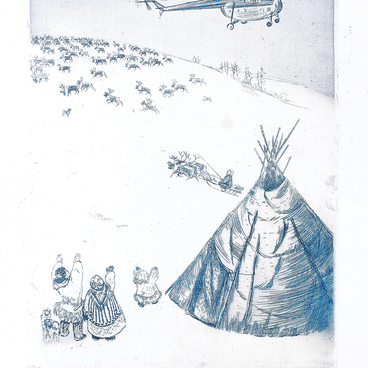Soviet genre painting was a unique phenomenon in the culture of developed socialism. It had a long and complicated history. From the early days of Soviet art, genre painting played a prominent role, capturing and reflecting the successes and achievements of socialism. The ideological and artistic goals of Soviet fine arts were also reflected in the original painting tradition of Turkmenistan.
Starting from the 1920s, the works of genre artists served as a chronicle of the social, economic, political, and cultural changes in Turkmenistan. Still, they primarily depicted everyday scenes. This was largely due to the fact that national art schools were mostly founded by visiting artists. As it developed, national art was enriched by the experiences and traditions of Russian and Soviet art, which can be observed throughout the history of the art of Turkmenistan, especially in the 1960s and 1970s.
The Irbit State Museum of Fine Arts houses a color linocut “Hymn to the Sun”, created by the Turkmen artist Aman Yomud Mohamed in 1975. It was inspired by the artist’s interest in the national culture of his people. This interest resulted in a series of color linocuts titled “Turkmen Novels”. “A Hymn to the Sun” is characterized by both an epic and lyrical depiction of the land where ancient civilizations rose to power and experienced their decline in the kingdom of the sun, sand, and dunes.
Aman Yomud Mohamed was born in Turkmenistan in
1945. In 1958, he won a children’s drawing contest and was sent to study at the
Surikov Institute Art School in Moscow. After graduating, he was admitted to
the Surikov Institute as one of the school’s best students. His teachers
included Yevgeny Kibrik and Mikhail Motorin.


